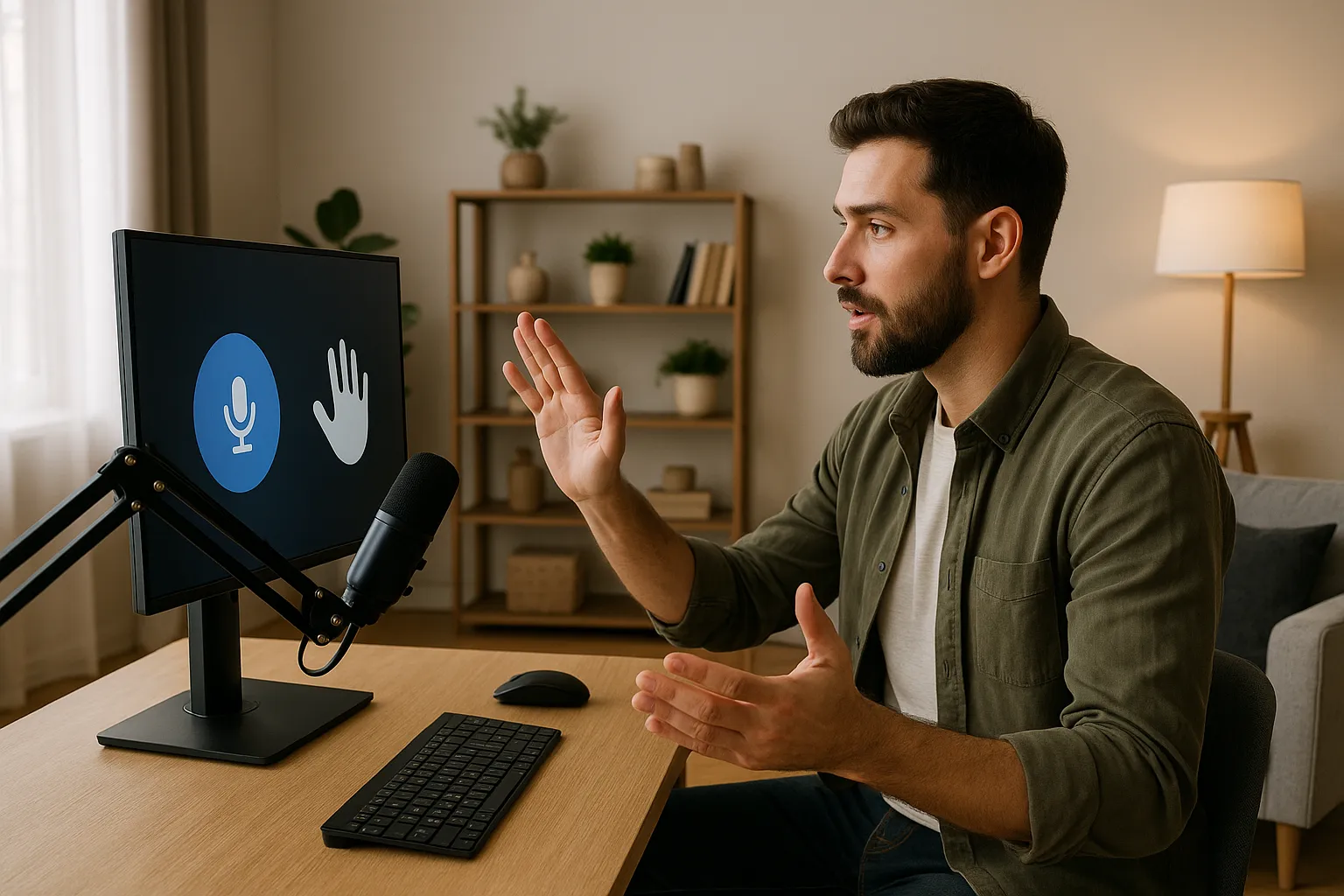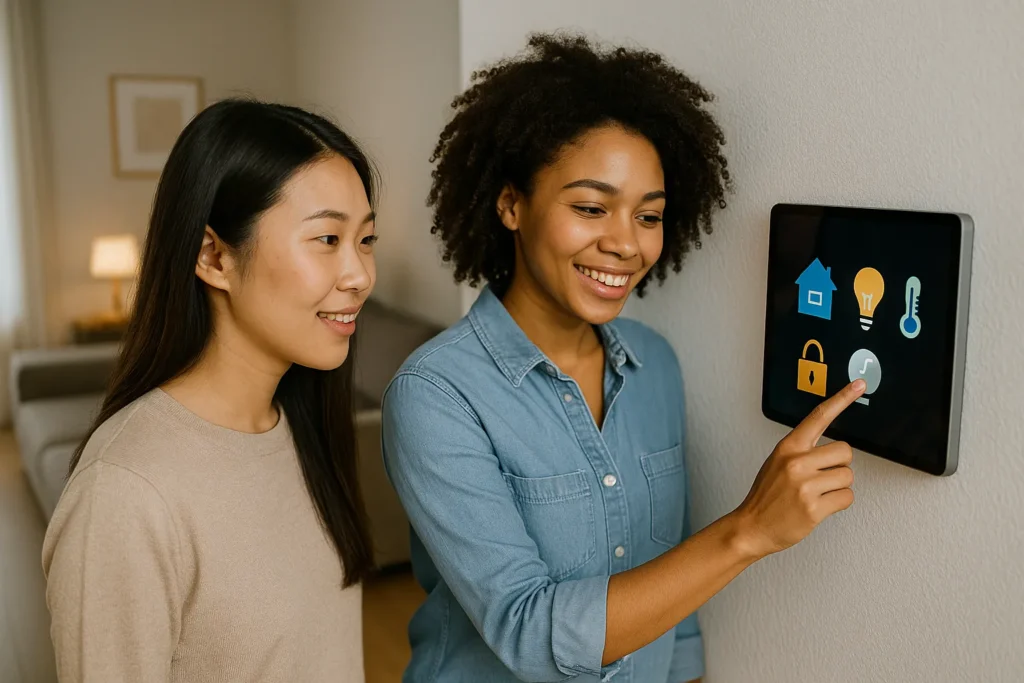
Every day, users are finding better ways to control devices without touching a thing. From turning on lights with a simple “Hey Google” to changing music tracks with a hand gesture, these methods feel more natural and more convenient than using screens.
The conversation around voice interface vs motion control is already deciding how we live and work. People want interaction that fits seamlessly into their environment and routines.
At Movea Tech, we explore how technology meets human behaviour. In this guide, we’ll explain how voice and motion control work, compare their strengths, and help you decide which is right for different situations.
Voice and motion controls are transforming how users interact with technology. Instead of clicking or tapping, people are now speaking commands or using simple gestures. This change makes digital interaction smoother and more natural across a wide range of smart devices.
Here’s a closer look at how each works:

These technologies represent a more human approach to user interface design. Instead of learning how to use a device, users expect the device to adapt to them. Voice and motion control each bring advantages to different scenarios, which makes them valuable tools in designing smarter, more responsive systems.
Picture this: you’re in the kitchen with messy hands and need to set a timer. A simple voice command does the trick. Later, you’re giving a presentation and want to change slides without touching anything. A quick gesture gets it done. Both methods are helpful. So, how do they compare?
Australia’s high level of tech adoption proves the demand for smoother interaction. Over 96% of Australians are online, with mobile connections exceeding population numbers. That means intuitive, accessible systems like these are more relevant than ever. [Source: Digital 2023: Australia – DataReportal]
Each approach solves different problems. In the next section, we’ll explore how machine learning and generative AI are helping both systems learn, adapt, and improve over time.
Smart devices are improving through machine learning and generative AI. These systems now respond with better timing, more accurate recognition, and actions that match what users actually need.
Machine learning helps voice assistants like Google Assistant handle accents, unclear speech, and varied sentence patterns. This reduces errors and helps users get things done without repeating themselves.
Motion-based systems are becoming more precise. AI now recognises differences in how people move. It allows designers to support a wider range of body types and control preferences.
Generative AI powers smarter suggestions and routines. If a user regularly plays music at a certain time or uses the same gestures for specific actions, the system can learn and automate these behaviours.
These technologies are influencing how designers think about UX. The focus is on intuitive interactions, clearer signals, and systems that respond to user intent without needing extra steps or corrections.
Each advancement makes the interaction smoother and the outcome more useful. As users grow familiar with these systems, they expect responses that match their goals and reduce unnecessary effort.

Voice and motion controls sound effortless until they don’t work. Both have clear advantages, but they also bring limitations that users often experience after the novelty wears off.
To start, voice interfaces rely on microphones that constantly listen for commands. This raises ongoing concerns around user privacy. People want convenience, but they also want to understand who hears what, where data is stored, and how it’s used.
While companies continue improving their security frameworks, the balance between accessibility and data privacy remains a common concern.
In addition, motion systems avoid audio-based surveillance but depend heavily on factors like lighting, space, and sensor quality. In low light or cluttered environments, gestures often go undetected.
For a broader audience, especially those with limited mobility, this can create frustration. If users struggle to interact with these systems, they often stop using them altogether.
Another area worth highlighting is feedback. When systems don’t respond clearly or accurately, it leads to confusion. Repeated negative feedback, such as unregistered gestures or misheard commands, makes people lose trust in the experience.
As a result, they become reluctant to use the technology consistently.
Therefore, it’s a must for designers to focus on solid design principles. These limitations show the importance of building digital systems that support flexibility and simplicity.
Above all, the aim should be to ensure users feel confident, understood, and able to complete tasks in a way that fits their real-life context. Design should focus on solving real user needs with technology that fits naturally into everyday life.
The real power of voice and motion control shows up when you match the right tool to the right setting. Each method fits different needs, depending on the environment, the users, and the type of task.
That’s why UX designers and product teams are paying closer attention to interaction design and context during development. Here’s how voice and motion controls work across different real-world situations:

Knowing when and where to apply each method helps business teams and users alike. With the right setup, these tools offer faster, easier, and more responsive control.
Voice and motion controls are becoming central to how people use technology. From homes to healthcare, these systems are showing up in more places, solving practical problems and improving how users interact with their environment.
This shift also signals a need for better product design planning. Companies that want to stay ahead need to invest in systems that can scale with changing user behaviour.
That means focusing on adaptable design systems, supporting intuitive interactions, and keeping pace with new emerging technologies. The goal is to make experiences feel natural, not forced.
At Movea Tech, we work with teams to build solutions that fit how people live and work. If your business is exploring ways to integrate voice or motion controls, we’re here to help you plan, test, and launch with confidence. The tools are already here.
Now it’s about using them the right way to deliver smarter, more engaging results.